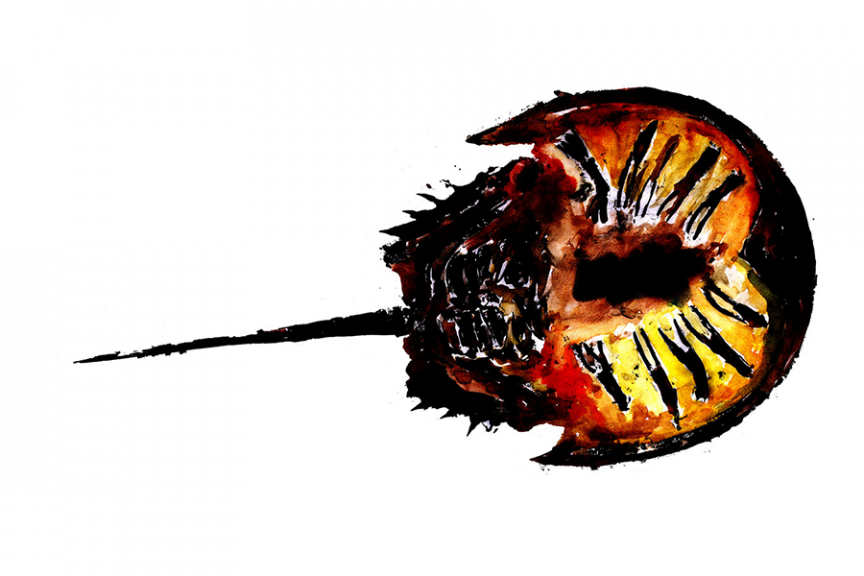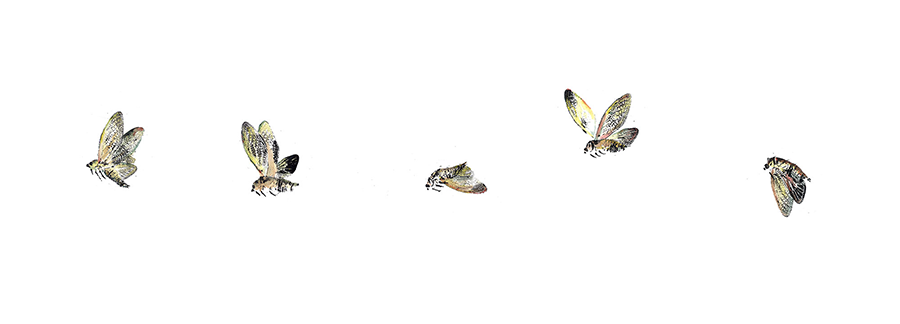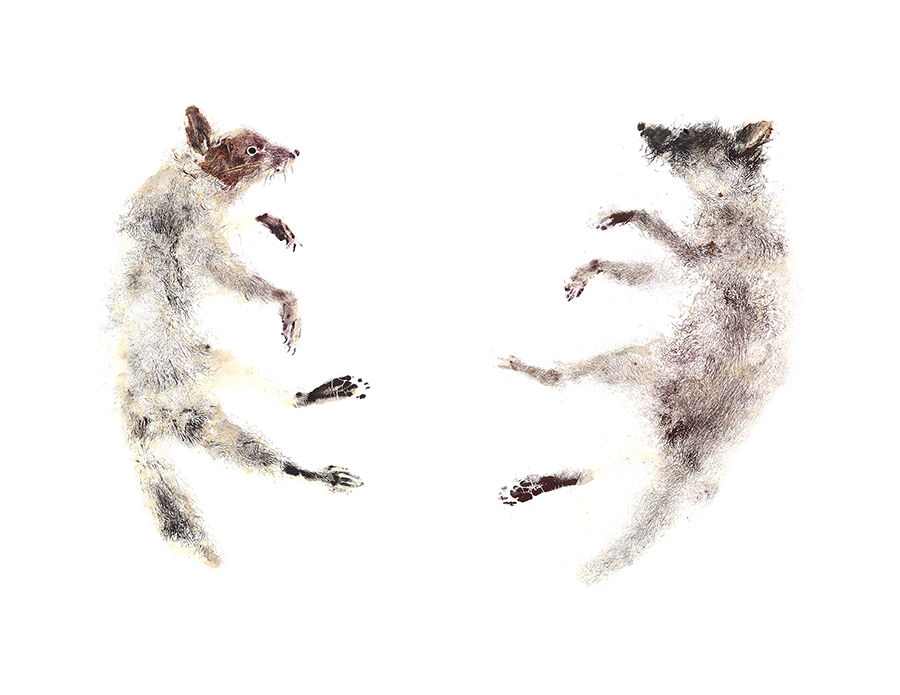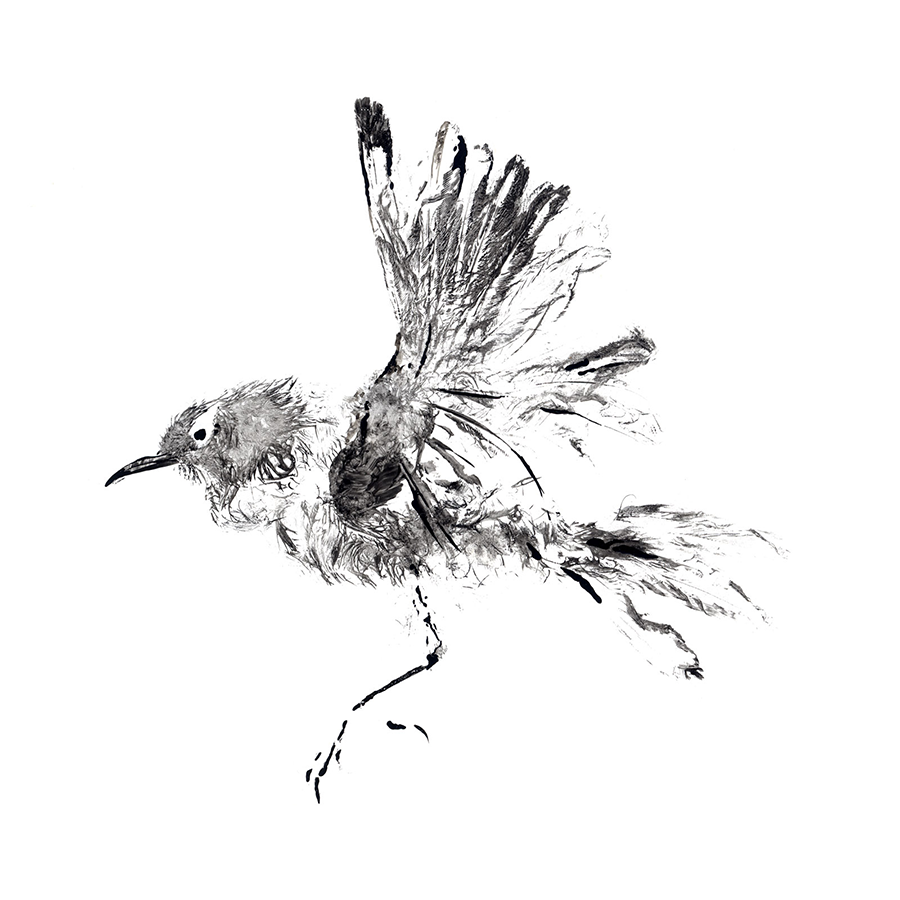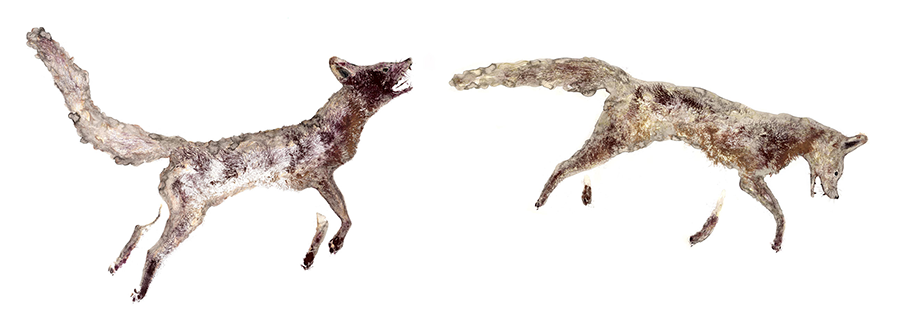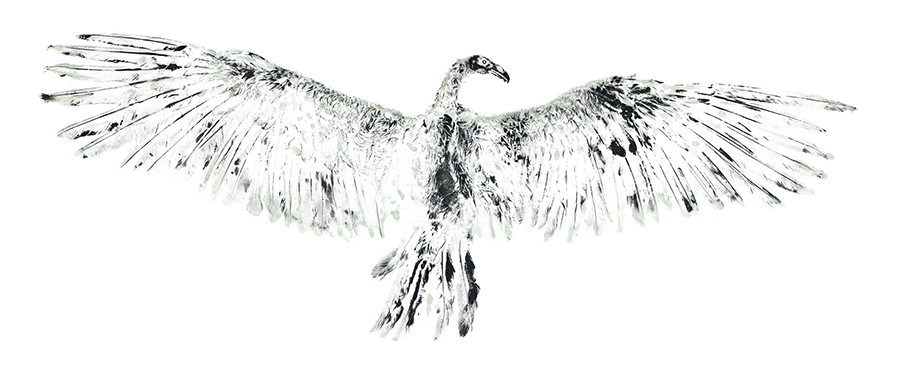Name: Inked Animal (Ben Labay and Adam Cohen)
Which came first in your life, the science or the art?
Ben: Art. I was very active and engaged with school art classes from a young age. I remember getting deep into all sorts of techniques and areas such as photography, painting, wood carving, and drawing. My interest in science came later in life as I ventured out into (and started to appreciate) the outdoor world to engage with natural landscapes and ecology.
Adam: In some ways both came at about the same time. I’ve always had plants and animals that I’d collect in the ditches around my childhood home in Houston. I kept them in aquaria in my bedroom and they helped me to become aware of the world around me. At the same time I have always enjoyed drawing and painting.
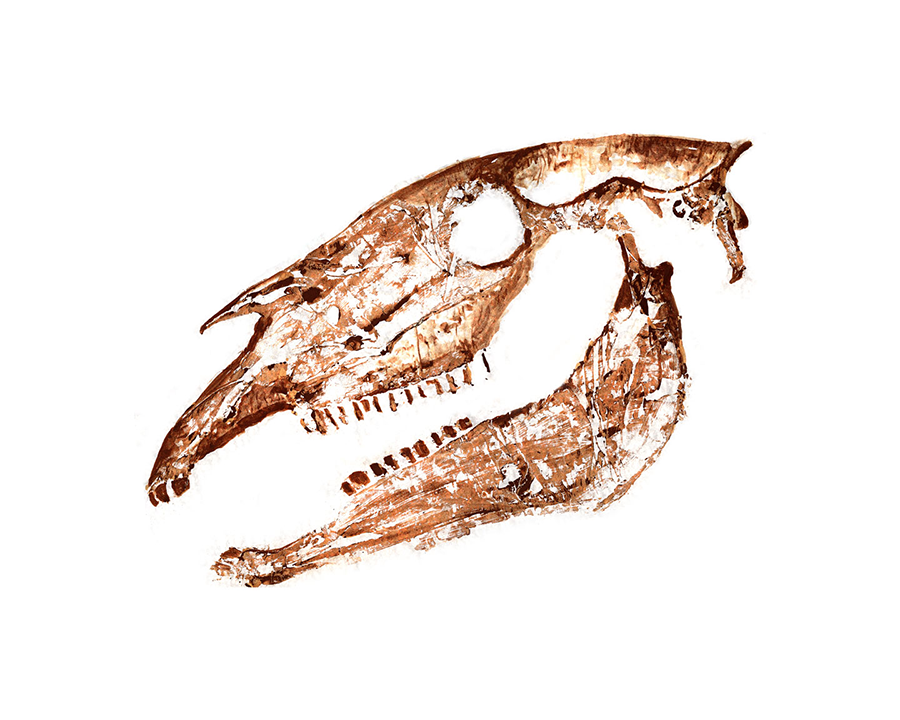
Horse skull
Which sciences relate to your art practice?
Ben: Primarily it’s biology and maybe a bit of ecology. Most of Inked Animal’s work focuses on form, not so much of the function of animals. We’ve approached some more complicated biological processes such as decay or how form suggests movement or action, but this is secondary I think. Mainly it’s about the beauty of an animal’s form, and creating a beautiful, approachable impression of what is normally not at all beautiful and approachable at times.
Adam: The anatomy of the animals is what relates to the look of our art, since it is effectively the “brush” that we paint with. A lot of what we do is find interesting anatomical attributes to feature as art. However, we are becoming more and more interested in natural processes such as decay and how the animal’s body changes upon death. For example, we have images that highlight the extruded guts of an animal, which essentially tells the story of its death. We also have pieces that show how the animals rot over time. We recently did a piece where we took a dead raccoon and painted its outline as it rotted resulting in concentric rings representing the animal’s body spreading out.
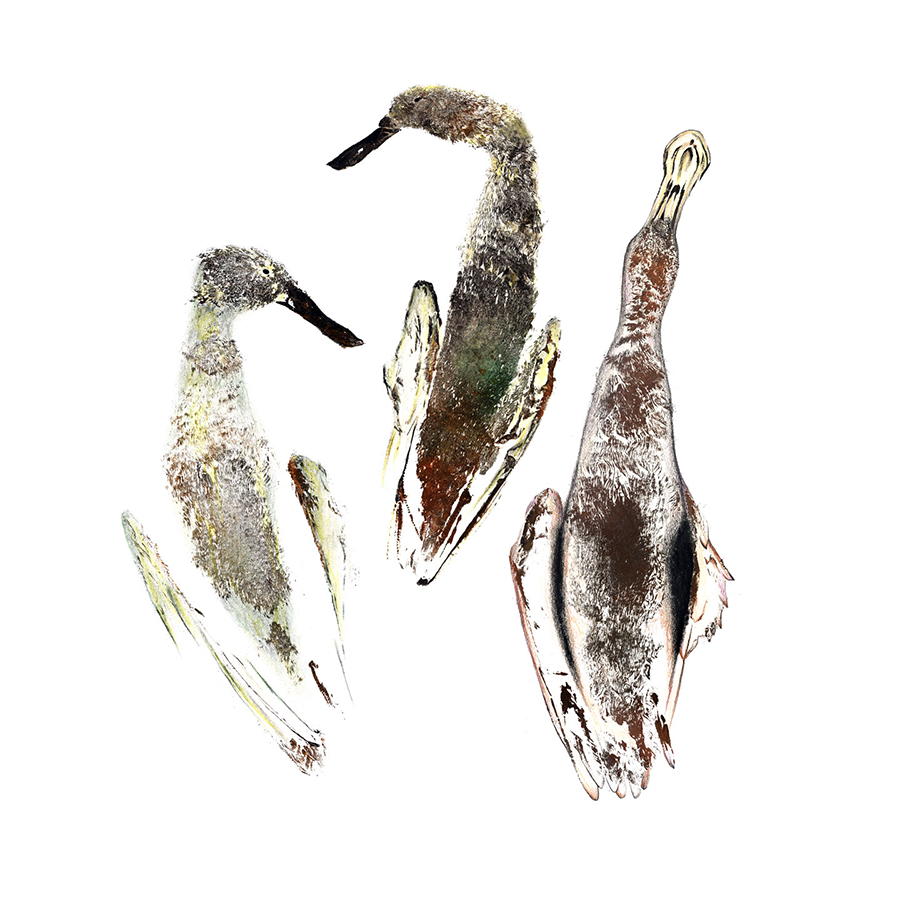
Northern shoveler
What materials do you use to create your artworks?
Ben: Paper and paint. We experiment with many types of paint, as some work better for certain types of animals than others, because of the different surfaces of scales vs. skin vs. fur. It varies from high quality acrylic spray paints, to India ink, to liquefied clay.
Adam: Our materials have been very experimental and we toyed with calling ourselves the Inked Animal Experiment to indicate the experimental nature of the project. We originally started doing very standard fish prints (Gyotaku) with flat papers and inks, but discovered that other materials and animals were far more interesting to us. We are doing all sorts of things now, but are particularly fond of spray paint since application of a light mist of paint that only adheres to the highest surfaces of the animal allows us to capture amazing detail and textures. By using tissue paper rather than stiffer papers we can bend into the 3-dimensional spaces (skulls for example). We like to use natural materials and often use watered down clay, blood, and feces as if they were paint. Many of our prints are post-processed with paint (water color or acrylics) and pencil.
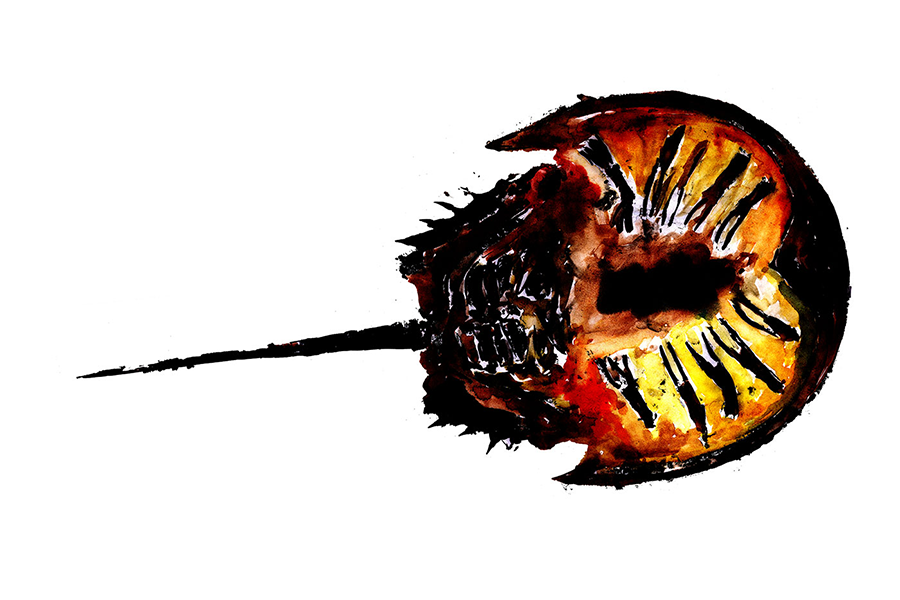
Horseshoe crab
Artwork/Exhibition you are most proud of:
Ben: I have two favorite pieces, our Winter wren, and the Double fox print. I can’t really explain why. Our Mexican free-tail bat print is pretty spectacular as well.
Adam: My favorite pieces are those that show aspects of internal anatomy since that is often hidden and considered grotesque by most people. Once it is presented as art in this indirect form it is somehow much more palatable for most viewers and in my opinion beautiful. Many people don’t (or can’t) see the beauty in the guts and gore, but somehow our art makes that beauty evident. I like our image of an opossum with protruding internal organs and another of a school of pompano (fish) showing their skeletons and gut cavities.
Which scientists and/or artists inspire and/or have influenced you?
Ben: E.O. Wilson has always been one of my favorite scientists and naturalists. I read him very young, so he was certainly an influence as far as how my appreciation of nature influences the art we do. I think my primary art influence might be my art partner Adam Cohen. He has an incredible collection of nature-inspired art, and working with him over almost 10 years has brought a ton of inspiration to me, more than from any other artist out there.
Adam: Two artists I like that instantly come to mind are Andy Goldsworthy and Friedensreich Hunderwasser, but what we are doing with the Inked Animal project shares little with them other than use of natural forms. I think our Inked Animal art is most influenced by traditional Japanese fish printing (Gyotoku), which is an ancient art that is still being done today. Our project started out in that form and has morphed into something very new via the spirit of experimentation and collaboration.
Artist Links: Facebook
Share this Post

